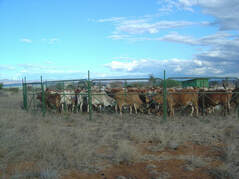
Grazing ecology and livestock-wildlife-plant interactions
Wild and domestic herbivores share many of the world’s rangelands and can profoundly influence the landscapes that support them. Gaps in our understanding of their effects and how to most effectively manage them include: 1) the relative effects of wild vs. domestic large herbivores on their habitat, and 2) how the relationships among different large herbivores and their habitats vary according to ecological context (e.g., soil type, plant community, productivity). Some of the lab’s research on this topic takes place in the Kenya Long-term Exclosure Experiment (KLEE), a broad-scale replicated experiment that, within a single ecosystem, tests the separate and combined effects of cattle, meso-herbivore wildlife, and mega-herbivore wildlife. Other lab research is based in Utah and the Great Basin, where we are using long-term livestock and wild ungulate exclosures to better understand relationships among elk, deer and cattle and their habitat, as well as how those ecological relationships are mediated by factors such as climate and plant community context. This work will provide insight into the fundamental context-dependent relationships among large ungulate species, but will also inform applied rangeland management and our ability to anticipate the ecosystem effects of herbivory. |
|
Other interests and past projects
|


